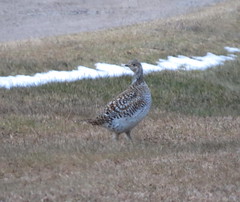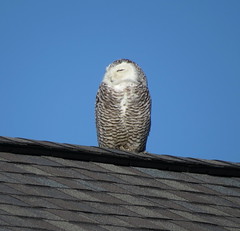Well 2016 has finally come to a close, and I’ve been a bad blogger. I’ve been rather lax in keeping up on my blog posts, which in turn keeps me out of the field. From Thanksgiving till now, the holidays can really suck your free time, and when I did get out birding, it was kind of slow. But this is a new year and I’ll try to be a little more frequent in keeping you the reader informed on my comings and goings. So let’s start with a re-cap of 2016, which by the way was one of my most productive years in regards to new life birds.
January 2016 started out with me not obtaining 100 species. I feel a warmer weather pattern and just plain bad luck, plus not having enough free time to really dig for those birds kept me from my goal.
Other than my usual hot spots in and around Southwestern Ohio, Northern Kentucky, and Southeastern Indiana, traveling was kept to my yearly visit to the Lake Erie for the big migrant movement and my big 2 week trip to the West Coast. Chasing rarities of any distance from my home was kept to a minimum, unless it was too hard to resist.
As for life bird of 2016, this was a difficult decision. Of the 42 new life birds I had to choose from how can I narrow it down to just one? Was it the Northern Pygmy Owl calling in the early morning at Redwoods National Park? Or how about the Curlew Sandpiper on our first day at Magee Marsh on Lake Erie during our 4 day stay? Another top contender would have to be the Black Rail calling at Muscatatuck National Wildlife Refuge. It could be my most recent life bird, the Brandt which hung around for several days at Rocky Fork State Park.
After some consideration , and looking back at myyear list over and over again, the logical choice had to be my very first life bird for the year, the Western Grebe, that myself and my oldest son David found at Caesar Creek State Park. I think the reason I was most excited about this bird is that I found the bird first, not someone else. And for a birder this is a very satisfying feeling. My 15 minutes of fame. Hopefully I’ll have the same kind of luck this year.

2016 came to a close with the annual Christmas Bird Count, which I participated in along with my buddy Jon, and a couple of other local birders I’ve been out with before. It started to out rainy and cold, but eventually the skies cleared and a nice breeze help kick up the raptors and vultures. The total count for the area was 88 birds species, and our own group of 4 came away with a total of 64. A nice respectable number if I do say so. Our group count of over 9,000 Common Grackles was the 3rd. highest in our Christmas count history, which by the way was an incredible sight to behold.
2017 has started off with lots of birding and some pretty good numbers as the first week comes to a close. Since the New Year I was able to hit some local hot spots and take care of the common birds. The last few years has seen my January 100 challenge come up miserably short of the mark,so this year I’m doing one thing differently. I’ve adopted the same strategy as most big year birders have, chase the rarities first.
On January 2nd word on social media had a sizable flock of Canada Geese with 3 Ross’s Geese, 14 Greater White-fronted Geese, and several Cackling Geese near the small town of Jamestown Ohio. I had already been out all morning birding over by the Oxbow, Fernald Preserve, (which was hosting 7 Tundra Swans) and the Lost Bridge area, so I was a bit tired already. So I volunteered to do the grocery shopping if I could chase these birds in Jamestown. So off I went again. Jamestown is is about 40 miles from my home and the small pond the birds were in was located at the intersection of 2 state highways. The only good viewing of the pond was parking along the shoulder of the exit ramp of one of the highways, which meant driving 2 miles out of my way so I could back track to the correct exit ramp.
So after my little detour I was able to set up next to another birder who had the same idea. It didn’t take long to add those 3 different species of geese to my January list, along with the added bonus of a couple of Northern Pintails. So needless to say after driving back and doing the grocery shopping I was exhausted.
Yesterday was my first day back to work after the long weekend and once again late in the morning social media was abuzz with 5 female Surf Scoters a,d a single female Black Scoter at Eastwood Metro Park in Dayton Ohio, another 40 mile drive from my home. Now Surf Scoter appear with some regularity every year in our area of Ohio, but a Black Scoter is something quite unusual. So leaving work 45 minutes early I still had to pick up a few more groceries that I forgot the day before, and fill up the bird-mobile. I had to get moving on these birds since the weather was deteriorating rapidly with thick overcast skies and loads of rain, and to top it off it’s rush hour. I really wanted to avoid the downtown Dayton area, so I printed off some alternate directions off MapQuest. Well that was a mistake, and I ended up following my GPS through Dayton without too much trouble.
Well I found the park easily enough, and the Surf Scoters, but not the Black Scoter. Then it started to rain harder making visibility difficult. As I was driving down the lake to scope out the other end I noticed a group of cars parked. They must have found the Black Scoter. A guy I meet where the Surf Scoters were told me the Black Scoter was actively feeding across the lake. Grabbing my scope in the driving rain I set up quickly and was able to watch at the Scoter was diving over and over again as it feed. Being wet and hungry it was time to go home.
So at the present time I stand at 69 bird species, which isn’t too bad considering that some birder up in Erie County was able to make his 100 species in 1 day. Show off. I’d like to see him do it down here. Anyway I’ll be updating as the birds come in, so wish me luck.
So here’s how my list stands now:
- House Finch
- House Sparrow
- Dark-eyed Junco
- Mourning Dove
- Eastern Gold Finch
- Eastern Towhee
- Carolina Wren
- White-breasted Nuthatch
- Red-shouldered Hawk
- Downy Woodpecker
- Blue Jay
- Eastern Bluebird
- Northern Cardinal
- Carolina Chickadee
- Hairy Woodpecker
- White-throated Sparrow
- American Crow
- European Starling
- Brown Creeper
- Hooded Merganser
- Mallard
- American Robin
- Belted Kingfisher
- American Wigeon
- Gadwall
- Red-bellied Woodpecker
- Tufted Titmouse
- Bufflehead
- American Coot
- Ring-billed Gull
- Red-tailed Hawk
- Northern Flicker
- American Tree Sparrow
- Northern Mockingbird
- Bald Eagle
- Canada Goose
- Common Goldeneye
- Merlin
- Peregrine Falcon
- Sandhill Crane
- Ruddy Duck
- Pied-billed Grebe
- Field Sparrow
- Ruby-crowned Kinglet
- Song Sparrow
- Rock Pigeon
- American Kestrel
- Yellow-rumped Warbler
- Red-breasted Nuthatch
- Northern Shoveler
- Tundra Swan
- Ring-necked Duck
- American Black Duck
- Swamp Sparrow
- Green-winged Teal
- Northern Harrier
- White-crowned Sparrow
- Redhead
- Common Grackle
- Horned Grebe
- Great Blue Heron
- Yellow-bellied Sapsucker
- Ross’s Goose
- Cackling Goose
- Greater White-fronted Goose
- Surf Scoter
- Black Scoter
- Northern Pintail
- Snow Goose
 Magnolia Warbler
Magnolia Warbler Fox Sparrow
Fox Sparrow Sora
Sora Chestnut-sided Warbler
Chestnut-sided Warbler














